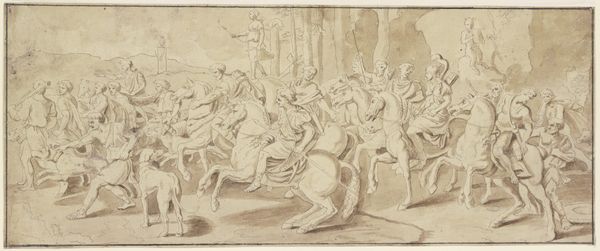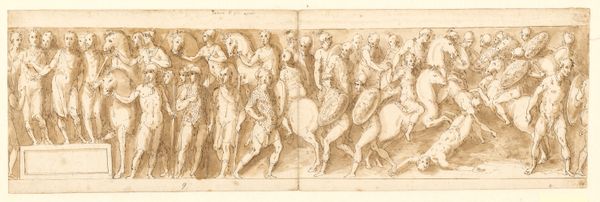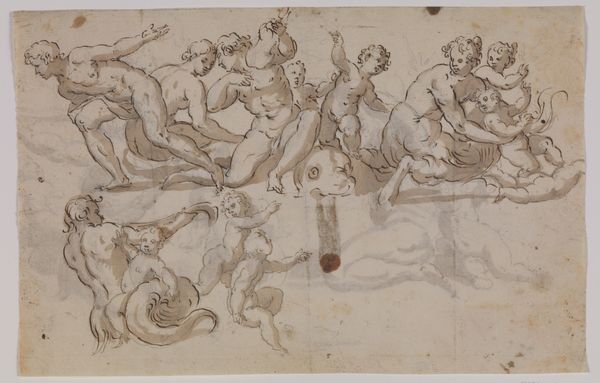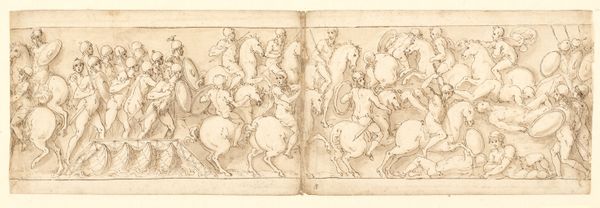
Attack on the Germans (LXIII); their chiefs are captured (partly restored on the column; LXIV) 1544 - 1618
0:00
0:00
drawing
#
drawing
#
figuration
#
history-painting
#
academic-art
#
italian-renaissance
Dimensions: 133 mm (height) x 432 mm (width) (bladmaal)
Curator: At first glance, the overall tonality gives it an ancient, almost fossilized feel. There’s an energy about it, though, like a contained riot unfolding across its surface. Editor: Indeed. What we’re looking at here is a drawing attributed to Giovanni Guerra, dating from 1544 to 1618. It's titled "Attack on the Germans (LXIII); their chiefs are captured (partly restored on the column; LXIV)." Currently, it resides in the collection of the SMK, Statens Museum for Kunst. Curator: The medium, a simple drawing, belies the complexity of the scene. The way Guerra renders depth and movement with just line work is fascinating. Think about the social context, though: creating studies like this was crucial for disseminating imagery and ideas, almost a form of early printmaking accessible to a select audience. Editor: Precisely. The drawing, academic in its style, demonstrates the Italian Renaissance’s interest in historical subject matter. The subject here is conflict, painted through the lens of cultural ideals. These depictions, however “accurate” they appear to be, further perpetuated cultural biases through visual means, reinforcing ideas of who constitutes “us” and “them”. Curator: The focus on figuration emphasizes bodies – both human and animal – as objects of labor, aggression, and subjugation. We are presented not only with bodies at work, but also bodies being defeated. This gives the image a raw power, a forceful materiality. It suggests, too, how the materials available and techniques deployed directly serve propagandistic function. Editor: Certainly. It seems that history itself is rendered as an ideological tool, not just as objective record, or a record meant to legitimize the artists patron's political positioning and imperial vision. Curator: Reflecting on it, what strikes me is the dual function this drawing served. Both a preliminary study, an element in a complex chain of art production, and, now, a historical object reflecting the very process that birthed it. Editor: I concur. The work encapsulates not just the scene depicted but the era's political vision of power, dominance, and art's role in solidifying that vision, both then and now.
Comments
No comments
Be the first to comment and join the conversation on the ultimate creative platform.













